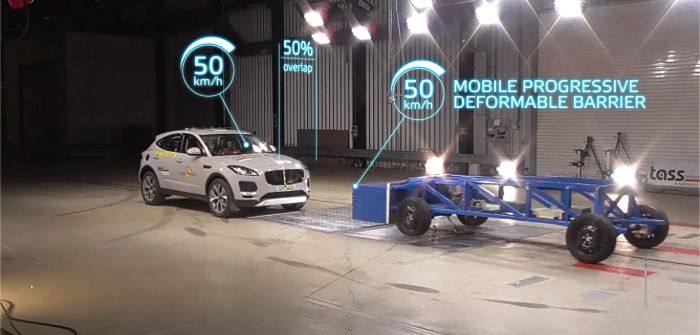Euro NCAP is updating crash-test protocols by adding damage caused to other parties. The move will force OEMs to incorporate new tests into their development programs.
The updates, which address changes in occupant protection, post-crash protection, and advanced driver assistance technology, sees a new moving barrier to moving car-frontal testing being introduced to replace the moderate offset-deformable barrier used for the last 23 years. The tweak will not only study protection for the occupants inside the car, but also assess how front-end structures contribute to injuries to the collision partner.
Side impact tests have also been updated with changes to the near-side barrier test speed and mass. Euro NCAP will evaluate far-side impact protection for the first time, focusing on driver protection and potential interaction between the driver and front seat passenger.
Further enhancements include the addition of tests for AEB technology and vulnerable road users, and Euro NCAP has taken the first steps to evaluate driver status monitoring to detect driver fatigue and distraction.
Finally, post-crash safety is now also being tested, with Euro NCAP’s assessors looking for ease of extraction, electric door handles and other features.
Matthew Avery, director of research at Thatcham Research welcomed the announcement, saying, “This is a new yardstick that vehicles will be measured against. We and Euro NCAP look forward to working closely with car-maker safety teams.”
He went to welcome the test for damage to other cars, saying larger cars historically had an unfair advantage over smaller cars: “In the new compatibility test, if the larger vehicle is too stiff in an impact scenario, it will be penalized accordingly. This levels the playing field for all vehicle sizes, which is a win-win for road safety.”


